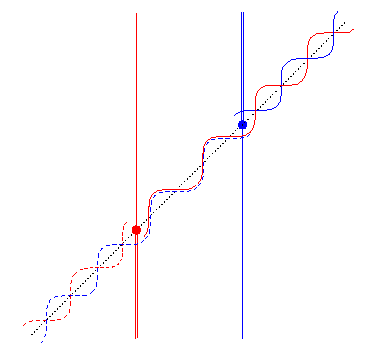

This paper was originally published in Reviews of Modern Physics 58, 647-688, July (1986). It is copyrighted (©1986) by John G. Cramer and the American Institute of Physics and may not be reproduced without permission. Reproduction of single printed copies for personal non-commercial use is authorized.
See also "An Overview of the Transactional Interpretation of Quantum Mechanics", published in the International Journal of Theoretical Physics 27, 227 (1988).
The interpretational problems of quantum mechanics are considered. The way in which the standard Copenhagen Interpretation (CI) of quantum mechanics deals with these problems is reviewed. A new interpretation of the formalism of quantum mechanics, the Transactional Interpretation (TI), is presented. The basic element of TI is the transaction describing a quantum event as an exchange of advanced and retarded waves, as implied by the work of Wheeler and Feynman, Dirac, and others. The TI is explicitly nonlocal and thereby consistent with recent tests of the Bell Inequality, yet is relativistically invariant and fully causal. A detailed comparison of the TI and CI is made in the context of well known quantum mechanical gedanken experiments and "paradoxes". The TI permits quantum mechanical wave functions to be interpreted as real waves physically present in space rather than as "mathematical representations of knowledge" as in the CI. The TI is shown to provide insight into the complex character of the quantum mechanical state vector and the mechanism associated with its "collapse". The TI also leads in a natural way to justification of the Heisenberg uncertainty principle and the Born probability law [P=*], basic elements of the CI.
This page was created by John G. Cramer on 7/1/96.